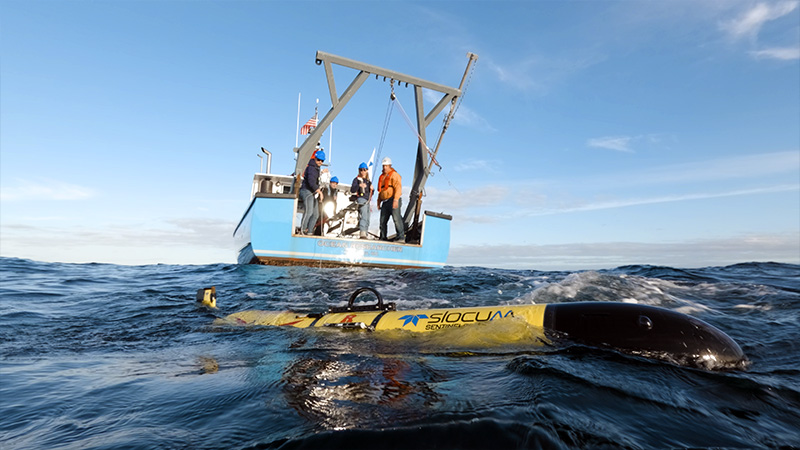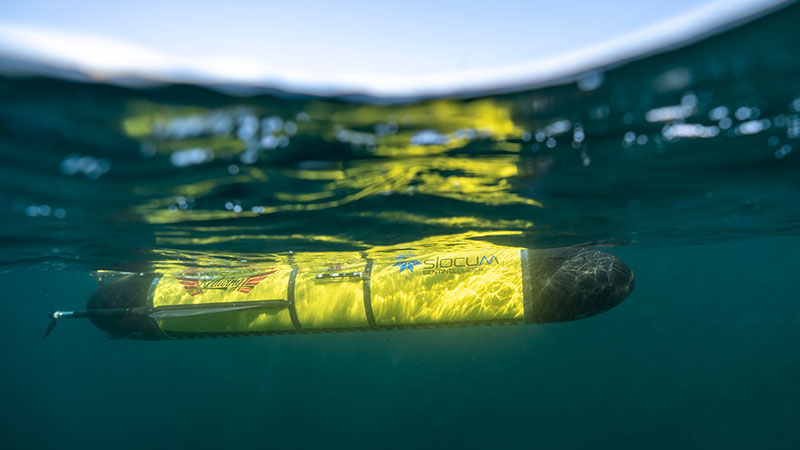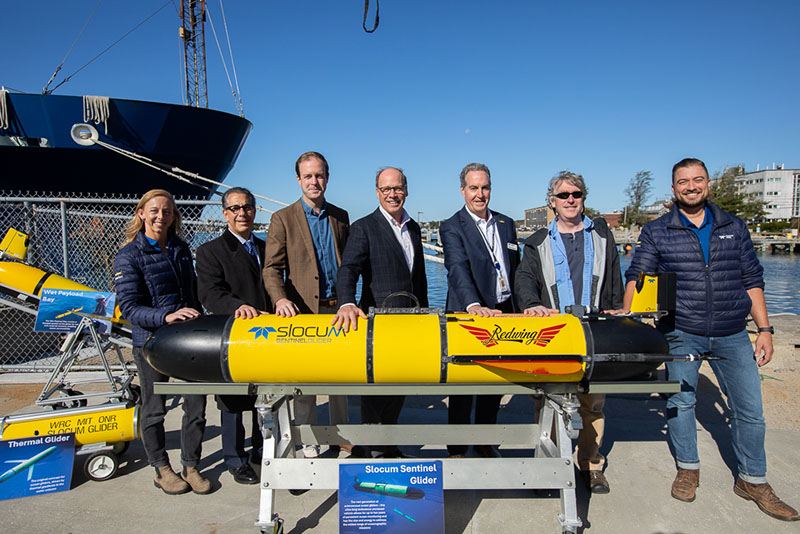Teledyne Marine's next-generation Slocum Sentinel “Redwing" glider was successfully launched into the Atlantic Ocean on October 11, 2025, approximately 43 miles southeast of Woods Hole, Massachusetts. This milestone marks the beginning of the five-year Sentinel Mission, where Redwing will become the first autonomous underwater vehicle (AUV) to circumnavigate the globe.
Mission Overview

On October 11, 2025, Redwing—a
next-generation Slocum Sentinel Glider—was launched into the Atlantic Ocean off the coast of Massachusetts. Guided by the rhythms of the sea and the promise of discovery, Redwing will collect ocean data, dodge fishing nets, and surf powerful currents, all without a human onboard. Its journey will span the Gulf Stream to Europe, south to Gran Canaria, onward to Cape Town, across the Indian Ocean to Australia and New Zealand, through the Antarctic Circumpolar Current, and eventually back to the Atlantic via the Falkland Islands, Brazil, and the Caribbean. Watch the launche >
The mission aims to revolutionize ocean data collection, improve weather forecasting and our understanding of the causes of extreme weather events, and inspire the next generation of ocean scientists and engineers.
Why Redwing Matters
 Redwing's mission will pave the way for a future global fleet of autonomous underwater gliders, continuously sampling our oceans. These gliders will deliver early warnings of extreme weather and track the impact of shifting ocean currents, refining long-term climate projections in ways scientists have dreamed of for decades.
Redwing's mission will pave the way for a future global fleet of autonomous underwater gliders, continuously sampling our oceans. These gliders will deliver early warnings of extreme weather and track the impact of shifting ocean currents, refining long-term climate projections in ways scientists have dreamed of for decades.
-
Sensors: Redwing measures salinity, temperature, and depth, helping scientists understand ocean movement and its effects on weather and climate.
-
Endurance: Its carbon fiber hull and buoyancy-driven movement allow it to operate for up to two years at a time, diving to different depths for a three-dimensional view of the ocean.
-
Real-Time Data: Redwing transmits data to scientists via satellite every 8–12 hours and carries a fish tracker to detect tagged marine animals, offering rare glimpses into migration patterns.
Collaboration & Innovation
The Sentinel Mission is a collaboration between Teledyne Marine and Rutgers University. Engineers from Teledyne, alongside more than 50 Rutgers University students—instrumental in developing flight tools and navigation software—will work together to track and keep Redwing on its time-critical flight path. Mission control will be split between Teledyne and the Center of Ocean Observing Leadership (COOL) room at Rutgers, where data will be analyzed throughout the five-year mission.
The mission also connects classrooms worldwide, enabling students to join virtual sessions, share cultural stories, and exchange letters with Rutgers students.
Brian Maguire, COO at Teledyne Marine, stated:
“We are humbled by the scale of this mission. To send a glider around the globe, every detail must be world class—the design, the hardware and software, the support, and the people executing the mission. This is our moonshot!"

Left to right: Cordie Goodrich - Teledyne Marine, Michael Kasparian - Falmouth Chamber of Commerce, Thomas Moakley - MA State Rep, Peter B. de Menocal- WHOI, Brian Maguire - Teledyne Marine, Clayton Jones - Teledyne Marine, and Shea Quinn - Teledyne Marine.
Follow the Sentinel Mission
Get more information
Press releases
Contact
For interviews or more information:
Kimberlee McHugh, Teledyne Marine, Marketing Manager
Email:
[email protected]
